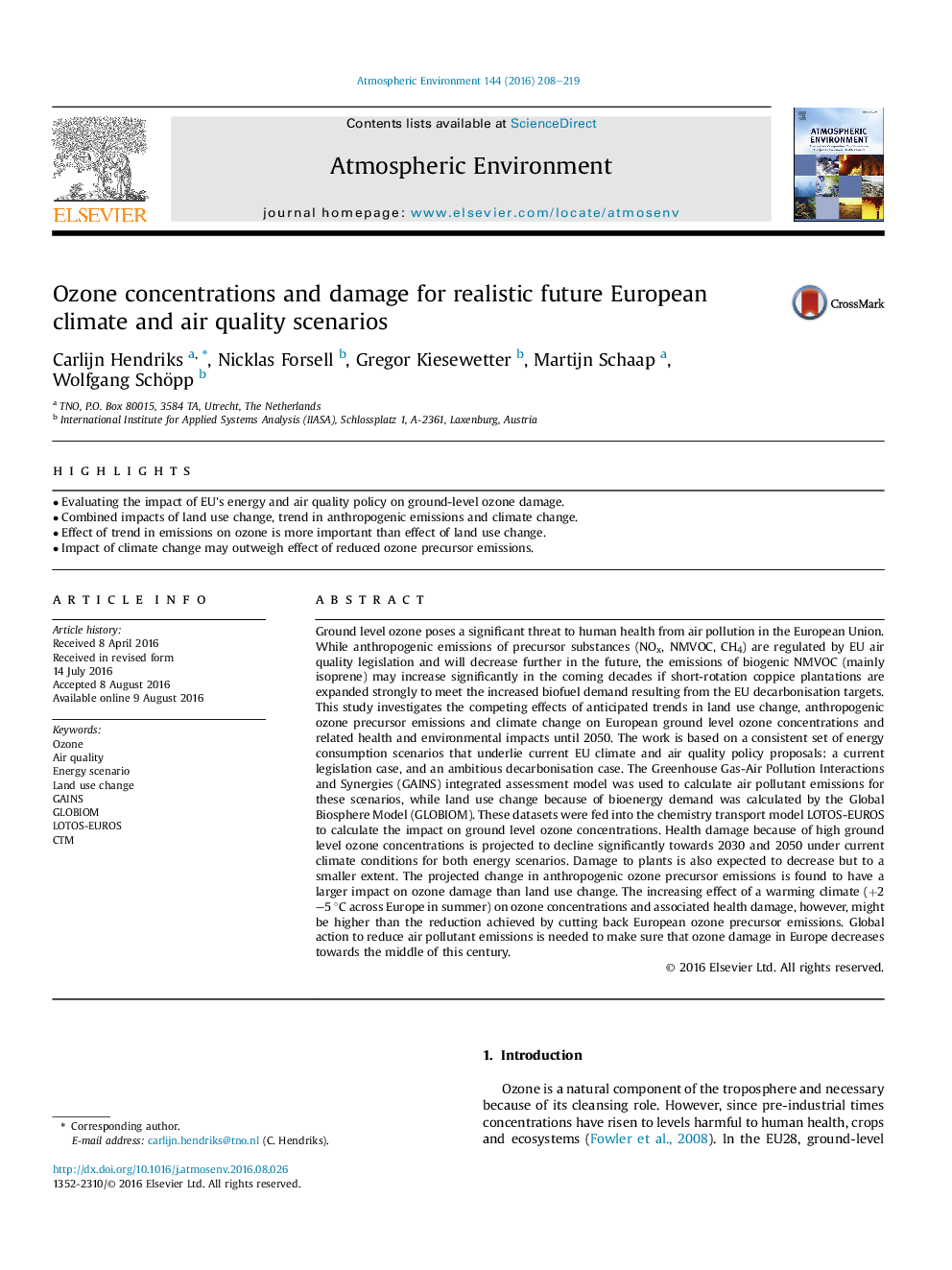| کد مقاله | کد نشریه | سال انتشار | مقاله انگلیسی | نسخه تمام متن |
|---|---|---|---|---|
| 6335664 | 1620330 | 2016 | 12 صفحه PDF | دانلود رایگان |
عنوان انگلیسی مقاله ISI
Ozone concentrations and damage for realistic future European climate and air quality scenarios
ترجمه فارسی عنوان
غلظت و آسیب اوزون برای صحت واقعی آب و هوا و کیفیت هوا در آینده اروپا
دانلود مقاله + سفارش ترجمه
دانلود مقاله ISI انگلیسی
رایگان برای ایرانیان
کلمات کلیدی
موضوعات مرتبط
مهندسی و علوم پایه
علوم زمین و سیارات
علم هواشناسی
چکیده انگلیسی
Ground level ozone poses a significant threat to human health from air pollution in the European Union. While anthropogenic emissions of precursor substances (NOx, NMVOC, CH4) are regulated by EU air quality legislation and will decrease further in the future, the emissions of biogenic NMVOC (mainly isoprene) may increase significantly in the coming decades if short-rotation coppice plantations are expanded strongly to meet the increased biofuel demand resulting from the EU decarbonisation targets. This study investigates the competing effects of anticipated trends in land use change, anthropogenic ozone precursor emissions and climate change on European ground level ozone concentrations and related health and environmental impacts until 2050. The work is based on a consistent set of energy consumption scenarios that underlie current EU climate and air quality policy proposals: a current legislation case, and an ambitious decarbonisation case. The Greenhouse Gas-Air Pollution Interactions and Synergies (GAINS) integrated assessment model was used to calculate air pollutant emissions for these scenarios, while land use change because of bioenergy demand was calculated by the Global Biosphere Model (GLOBIOM). These datasets were fed into the chemistry transport model LOTOS-EUROS to calculate the impact on ground level ozone concentrations. Health damage because of high ground level ozone concentrations is projected to decline significantly towards 2030 and 2050 under current climate conditions for both energy scenarios. Damage to plants is also expected to decrease but to a smaller extent. The projected change in anthropogenic ozone precursor emissions is found to have a larger impact on ozone damage than land use change. The increasing effect of a warming climate (+2-5 °C across Europe in summer) on ozone concentrations and associated health damage, however, might be higher than the reduction achieved by cutting back European ozone precursor emissions. Global action to reduce air pollutant emissions is needed to make sure that ozone damage in Europe decreases towards the middle of this century.
ناشر
Database: Elsevier - ScienceDirect (ساینس دایرکت)
Journal: Atmospheric Environment - Volume 144, November 2016, Pages 208-219
Journal: Atmospheric Environment - Volume 144, November 2016, Pages 208-219
نویسندگان
Carlijn Hendriks, Nicklas Forsell, Gregor Kiesewetter, Martijn Schaap, Wolfgang Schöpp,
